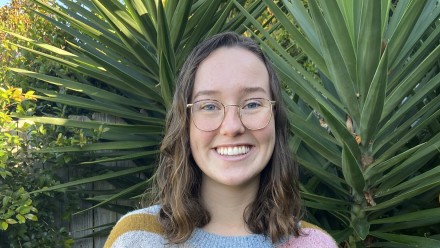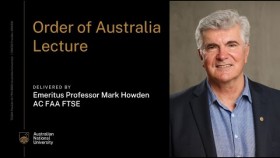Calculating the Carbon Cost of Coffee
You’re probably familiar with the cost of your morning cup of coffee. That caffeine hit might set you back four or five dollars. But have you ever considered the carbon cost of growing those coffee beans?
Mikayla Hyland-Wood is undertaking her honours research project with the ANU Fenner School of Environment and Society, focusing on understanding and measuring the carbon cost of growing coffee in Papua New Guinea.
Through her research, Mikayla is looking at the effectiveness of current carbon calculators – that is, formulas used to calculate how much carbon is sequestered or released during agricultural activity – in agroforestry and in tropical countries, like the Papua New Guinea coffee sector.
“Existing calculators have been created in Europe, North America or Australia and focus on cropping or grazing, so there’s a really glaring gap,” she said. “There’s no carbon calculator specifically designed to cater to tropical environments or agroforestry.”
Recently, Mikayla’s research took her to Papua New Guinea to explore the matter firsthand. With her supervisor Dr Steven Crimp, Research Fellow at the ANU Institute for Climate, Energy & Disaster Solutions, and agronomist Shaun Lisson, Mikayla engaged with stakeholders from the whole coffee supply chain – farmers, exporters and government peak bodies, as well as consumers.
“Calculating the carbon cost of coffee production has implications for each of these levels of the chain,” said Mikayla.
Mikayla recalls how valuable it was to hear each of these different perspectives and how challenging but rewarding it was to explain the potential implications of her work to these different groups.
“Everyone’s needs are so different. Farmers have the opportunity to gain product labelling and sell carbon credits, consumers want to make informed purchasing decisions, and government peak bodies like the PNG Coffee Industry Corporation are concerned with the practicalities of introducing and enforcing carbon calculators.”
For local farmers, Mikayla’s research has some very tangible outcomes. By contributing to expanding livelihood options for farmers, Mikayla’s research is helping to build resilience in agricultural systems, providing a broader range of economic opportunities for farmers, and thereby increasing their ability to pay for vital adaptation options.
From an initial 36 possible carbon calculators, Mikayla selected six that she thought offered the best chance of success in PNG. She carefully collated all the inputs needed for her six study calculators which included data on everything from the size of the plantation to rainfall and soil types.
“I wrote those all down and sent it as an exercise to the stakeholders. This was a really good way of gauging what data was already collected, what data needed to be collected and what data was just off the table,” she said.
By considering what is accessible and most practical for her stakeholders to use Mikayla has narrowed down the suitable carbon calculators to two preferred candidates, which she will discuss in her final honours thesis.
“[The trip to PNG] gave me a realistic sense of what it is like to work in a developing country and the sorts of barriers they run into.”
The highlight of this trip for Mikayla was the human connections she was able to form with these stakeholders.
“It’s really difficult to understand what a coffee farm even looks like from just a textbook or peer-reviewed literature. It’s such a different experience to stand with someone who has lived on the property their entire life.”
Mikayla hopes to continue working in the sustainable agriculture for development sector into the future and has particular interest in the Pacific and South East Asia region.











